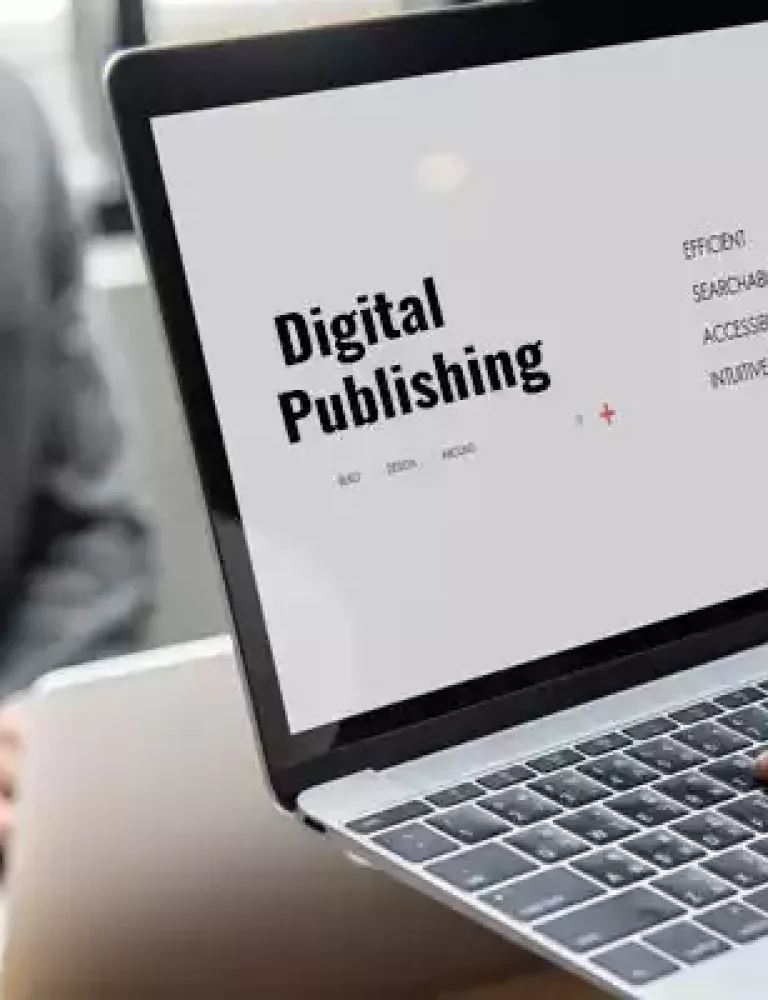Content has crossed the boundaries of printed text to engage with users through a vast spectrum of technological advancements. The use of technology is omnipresent in the learning process, be it inside or outside the classroom environment. The convenience of learning via digital media has led it to a steady takeover across all age groups.
One of the ways in which users engage with digital content is through eReaders. eBook readers are unique in that they are competing with physical books as well as non-text forms of media. To stay on top of this competition, eBook readers must appropriate several features from other forms of digital content.
Publishers and educators must understand these features to make informed choices about their content strategy. Digital textbook platforms like KITABOO offer these essential features to publishers, helping them boost the reach and performance of their content.
Table of Contents
I. What are the Advantages of Digital Reading?
II. What to Expect From an Advanced eBook Reader
- Intuitive and Customizable Viewing
- Multimedia Support
- Activities and Quizzes
- Text-to-Speech
- Search and Annotation
- Sharing and Feedback
- Analytics
- Multi-Device Support
III. Conclusion
What are the Advantages of Digital Reading?
Here are some of the advantages of digital reading:
1. Portability and Inclusivity
With digital books, users can carry their content anywhere at any time. If they have purchased an eBook valid across multiple devices, they can simply read it on the device at hand.
With the reflowable eBook format, the user experience will be comfortable irrespective of the device in use. This is because the eBook’s layout and content will reflow to adapt to the eBook reader.
Supporting multiple devices also increases the reach of digital books across financial borders. With the right eBook reader application, readers can access the content even on an affordable mobile device.
2. Comparative or Diversified Reading
Due to the compact nature of digital content, users can pack plenty of books into a single eBook reader.
They can carry several books per subject and build an extensive collection of eBooks for all subjects in their curriculum. This allows users to research the topic from multiple sources, compare them, and form a more cohesive picture.
3. Interactivity
Traditional printed books rely entirely upon the reader to pay undivided attention to the content while reading. While there are benefits to such an exercise, it also increases the mental load on users.
On the other hand, digital books introduce the option of interactive content like videos, audio clips, and animation into publishing. Correctly used, these elements can enhance the eBook reader’s learning process by supplementing the written text.
4. Collaborative Learning
In a classroom or educational setup, one of the pivotal advantages that eBooks offer is the ability to forge collaboration. Readers can share their notes with their peers as well as with the educator, thereby achieving multidirectional participation and feedback.
What to Expect From an Advanced eBook Reader
Having seen the potential benefits of digital content, let us now look at how eBook readers can fulfill this potential. Here are a few features that would constitute the ultimate eBook reader:
1. Intuitive and Customizable Viewing
A good eBook reader will minimize the overhead involved in engaging with the content. One way to achieve an intuitive reading flow is to use reflowable formats for the eBook.
With this, your content will automatically adapt to the best fit for the current device being used. Apart from supporting reflowable content, additional options are required to meet the user’s viewing preferences. Features like two-page view, fit-to-screen, and zoom help the user optimize their eBook reader experience.
2. Multimedia Support
Standalone text descriptions are sometimes not enough to explain a subject with complete clarity. Leveraging other media forms for content will impart a much clearer picture of the topic to the reader. Additionally, having multiple modalities of engagement allows educators to include students with sensory impairments.
Overall, with careful inclusion of multimedia in your eBook, you can increase its effectiveness and accessibility. Thus, your eBook reader must support such standout elements of an eBook.
Publishing solutions like KITABOO’s eBook platform allow you to seamlessly embed video, audio, and images in your digital content.
3. Activities and Quizzes
The eBook reader you choose should support interactive widgets like quizzes, image labeling activities, and flash cards. When introduced at regular intervals, they boost the learning retention of readers, thus increasing your eBook’s efficiency.
4. Text-to-Speech
An eBook reader cannot be considered advanced without a text-to-speech feature. The use of a computer-generated voice to convert text to speech is highly feasible with current technology.
Text-to-speech has several advantages, which include:
- Continued engagement with the eBook while on the move
- Extended reach of the eBook to readers with visual impairment
- A reduced learning threshold for users new to the language of the eBook
5. Search and Annotation
A basic feature of any quality eBook reader is allowing readers to search the eBook for specific keywords or phrases. In addition, annotation tools like highlighters and notes are also imperative to retain the advantages offered by a physical book.
6. Sharing and Feedback
The benefits of interactive learning are not limited to the content consumption experience; they extend to collaborative experiences as well. This is particularly beneficial for the educational setup.
With collaboration-friendly digital textbook platforms like KITABOO, notes, questions, and quiz responses of students can be shared with the teacher. The teacher can also provide feedback based on these inputs, which will contribute to performance improvements.
7. Analytics
One of the features that distinguish an elite eBook reader from the competition is data analytics. With the help of data analytics, educators and publishers can gain an in-depth understanding of their content and readers.
Examples of key data metrics include:
- Time spent by readers in a single sitting
- User engagement with the multimedia content captured as clicks
- Reading schedules and speed of the users
- Percentage completion of the eBook by a single reader
- List of readers who have completed reading the eBook
- Annotation data like notes created or shared
- Performance of content based on engagement
Platforms like KITABOO offer a myriad of such insights that can be invaluable to publishers and teachers. You can use these insights to customize your content creation, marketing, and classroom teaching strategies.
8. Multi-Device Support
A high-end eBook reader should be as platform-agnostic as possible. The device platform on which readers will engage with the eBook can vary drastically.
Different users may use different devices, and a single user may use multiple devices based on their location. Without cross-platform support, the costs involved in delivering the content will rise significantly.
Cloud-based solutions like KITABOO support a wide range of devices that can be used as eReaders.
Conclusion
The potential of digital reading relies upon the eBook reader that delivers the content and dictates the user experience.
A quality eBook reader must include features that support intuitive, interactive, and immersive content consumption. It should also offer valuable data and key insights about the reader-content interaction to publishers and educators for continuous improvement.
KITABOO’s end-to-end eBook solution fulfills these requirements and, therefore, maximizes the impact of your digital content. To know more, contact us today!
Discover How An Ebook Conversion, Publishing & Distribution Platform Can Help You
Kitaboo is a cloud-based content platform to create-publish & securely distribute interactive mobile-ready ebooks.
You May Also Like
-
eBook Builder: Craft Your eBook with Ease
Blog,Digital Publishing,eBook solution / February 27, 2024








